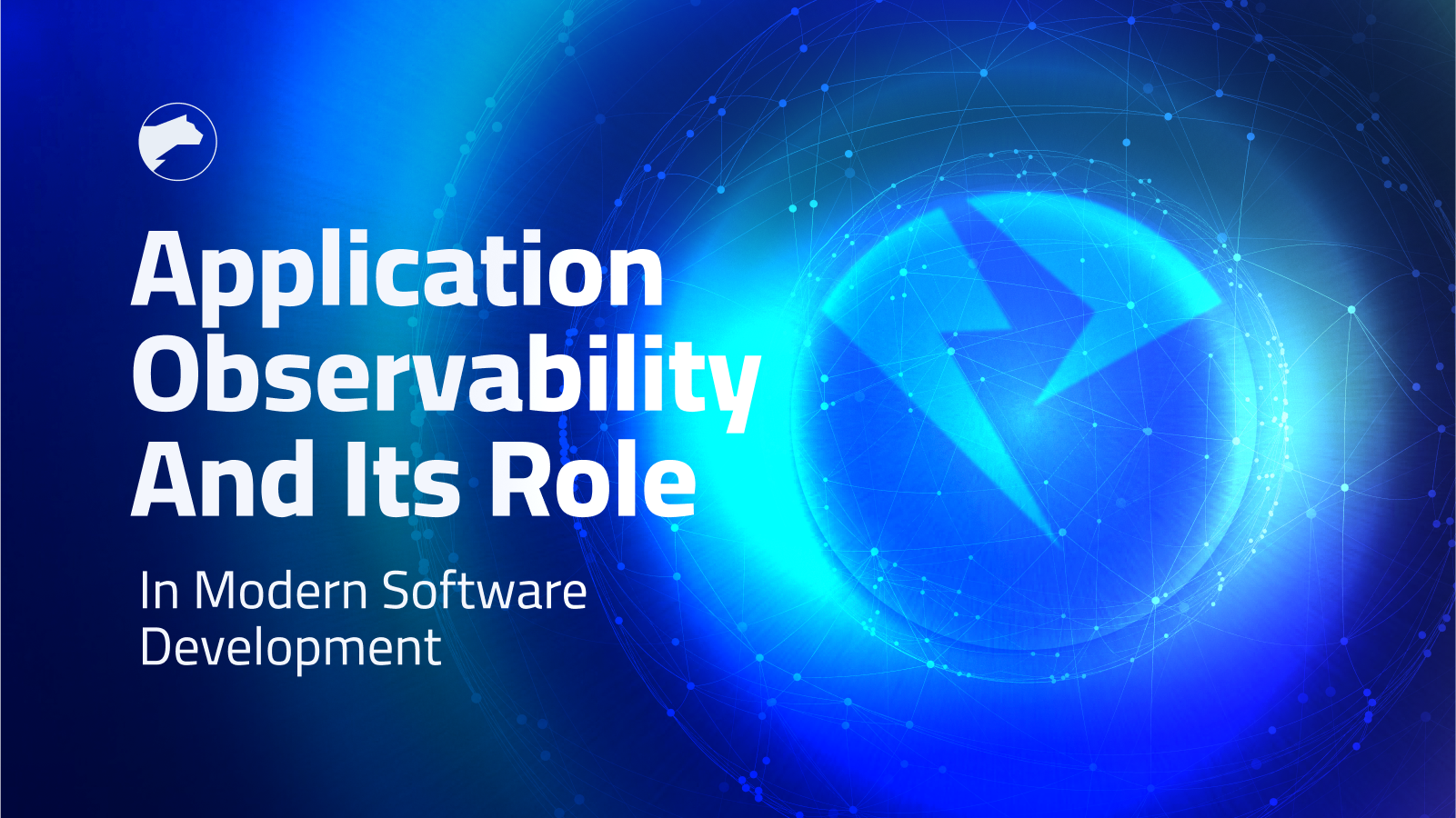

Application Observability And Its Role In Modern Software Development
Over the last few decades, software systems have grown complex due to the emergence of cloud-native architectures and multi-cloud environments. On the one hand, this makes it difficult to detect issues faster in the deployed application. It also requires intricate coordination between development, DevOps, and SRE teams, as they are also expected to speed up the whole software delivery process.
Application observability holds the key to unlocking these hurdles. It leverages dynamic instrumentation to capture telemetry data. This helps expedite complex issue resolution and overhaul the debugging and delivery processes within the software development lifecycle. Let’s understand this concept in more detail and explore its facets and advantages applicable to software development.
What is Application Observability?
Application observability is a practice within software development that oversees a software application’s internal state by capturing the telemetry data in the form of logs, traces, and metrics.
These are captured across all components of the end-to-end application, such as hardware devices, mobile apps, services, API endpoints, etc., to provide comprehensive insight into their internal working and, in turn, enable efficient issue detection and resolution to maintain system reliability and customer satisfaction.
Application observability aligns with the DevOps practice. it cuts across SRE to continuously monitor the application’s internal stack and resource consumption to find functionality and nonfunctional anomalies. It also acts as an aggregated data store for the logs, traces, and metrics data, enabling visualization and reporting for advanced and holistic insights on the overall application performance.
Three major factors are driving the need for application observability in today’s enterprise software platform landscape:
- Transition of software from tools to platforms. Software adoption has evolved over the decades from tools that perform specific tasks such as writing, accounting, painting, etc., to platforms offering multi-user, multi-device collaboration and end-to-end workflow management over the cloud. This is one of the main reasons behind the increasing complexity of software architecture and the resulting challenges in efficient delivery and issue resolution.
- Evolving service level agreements: Due to the as-a-service software delivery model, application deployment is part of the vendor’s service level agreement (SLA), including service uptime and reliability. In the earlier era of desktop software, deployment was the customer’s responsibility, and SLAs were limited to issue resolution.
- Advent of Data Analytics: With advancements in data analytics, developers can better utilize the telemetry data, such as logs and other outputs, to improve the software application’s performance instead of just using them for debugging and issue resolution.
Evolution of Application Observability
Application observability gained traction during the last decade as part of the DevOps practice, which helped streamline the release cycles via continuous integration and deployment processes.
It was also influenced by the Site Reliability Engineering (SRE) revolution initially mooted by Google to ensure the reliability of large-scale distributed systems. It derives from the original control theory definition of observability, which is the ability to understand a system’s internal state by examining the data it produces.
Observability is frequently used with monitoring to describe a software system’s key performance metrics. However, monitoring focuses on standard metrics collected to assess any application deployment’s health.
Observability, on the other hand, aids in collecting metrics across the entire stack to capture specific data that can predict future events and anomalies. Both have a symbiotic relationship, and observability extends the data gathered through monitoring to provide additional insights while triaging a service outage or debugging a runtime issue.
Application observability has also evolved into a few subdomains addressing specific use cases, such as security observability and developer observability. Security observability ensures a consistent and ironclad security posture of applications and infrastructure by detecting and responding to threats and vulnerabilities. Similarly, developer observability provides developers with the visibility needed to understand source code-level behavior related to business logic execution and performance.
5 Advantages of Application Observability
#1 Real-time feedback loop
Application observability establishes a real-time feedback loop to support data-driven decision-making about the impact of code changes, infrastructure adjustments, and performance optimizations.
With the help of logs, traces, and metrics, developers receive immediate feedback on the impact of source code modifications or additions, allowing for quicker iterations and more informed decisions.
The same applies to DevOps while managing the CI/CD pipelines to check for performance and reliability aspects as part of the pre-production tests and to SRE teams for managing the infrastructure-related configuration changes.
This has a positive impact on accelerating the development cycle for new releases and reducing the time to market for new features.
#2 Proactive troubleshooting and diagnosis
This one ties back to the ability to create a real-time feedback loop. Application observability not only accelerates development cycles but also expedites troubleshooting for development issues.
Application observability facilitates the generation of detailed logs and traces in runtime using dynamic instrumentation to provide the necessary context to understand the root cause of issues, thereby reducing the average Mean Time to Resolve (MTTR) metric for issue resolutions.
Additionally, application observability enables proactive optimization of the deployment resources by continuously monitoring key performance indicators (KPIs) related to scaling and redundancy. It can diagnose exceptional scenarios, such as surges in user requests, which could lead to performance degradation, or deployment outages, which could disrupt the service. By detecting these scenarios early, application observability allows for timely and effective responses, minimizing the impact on the end-user experience.
#3 Better analysis through visualization
Application observability platforms contain a treasure trove of telemetry data. Traditionally, all this data was captured in unstructured log messages, which is difficult to process for objective analysis. Streamlining the captured log data into a well-defined telemetry structure makes it much easier to analyze through visualization.
To support such analysis, application observability platforms provide visualizations of aggregated telemetry data through various means. They provide dashboards for reporting the KPIs and critical application health metrics.
Further, they also offer custom visualizations for things such as call traces and message sequences, which are highly beneficial for root cause analysis. They also support alerts and notifications based on pre-configured rules mapped to the threshold values of specific vital metrics.
#4 Automated deployment remediations
Application observability can orchestrate configuration changes to manage the auto-scaling and self-healing of the application’s deployment based on continuous monitoring of the infrastructure-related KPIs. That’s why it supersedes traditional application monitoring methods to trigger automated responses, such as scaling resources or restarting failed services.
Such capabilities reduce human interventions, allowing teams to focus on more strategic initiatives instead of mundane daily tasks.
#5 Continuous improvement culture
Finally, incorporating application observability in the software development lifecycle fosters a culture of continuous improvement. Development teams can conduct periodic checks of the observability data and incidents to predict anomaly patterns and areas for future performance improvement well in advance.
To nurture such a culture, additional training must be imparted to inculcate best practices for leveraging observability data. Further, discussions around this data must be part of important review meetings, such as the retrospective meetings in the agile methodology. Similarly, checkpointing and reporting the observability data must be mandated during significant milestones, such as feature releases.
Bringing It All Together: The Impact of Application Observability
Application observability empowers development teams with a white-box approach to find insights into the functioning, performance, and health-related indicators of software applications. It brings a proactive, data-driven practice based on comprehensive evidence backed by logs, traces, and metrics to swiftly detect and resolve issues, optimize performance, and enhance user experience.
The overarching impact of this practice has a massive upside on the competitive advantage, resulting in a more reliable, efficient, and high-performing software platform that serves the user 24/7 in accomplishing mission-critical tasks.
Book a Demo with Lightrun to learn more.
It’s Really not that Complicated.
You can actually understand what’s going on inside your live applications.




